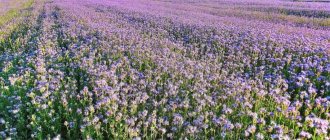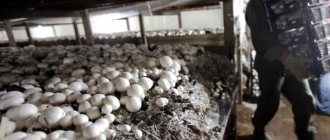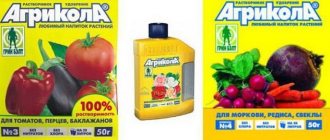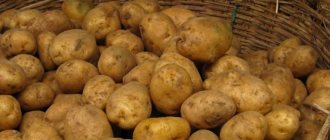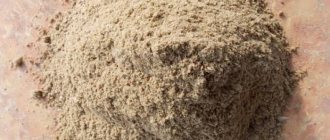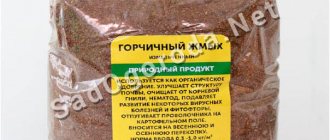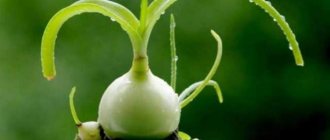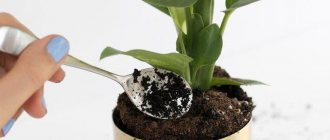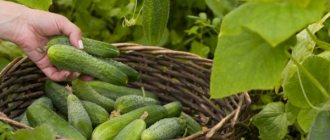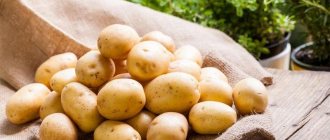I don’t think there are any gardeners who would voluntarily add weeds to their plots. But you don’t need to invite the grass, it will grow itself. It will take root so quickly and so well that it will not be easy to remove. Of course, many achieve that literally “black steam” reigns in their gardens all year round. But is it really that good? And is it necessary to declare an all-out war on the grass?
A few years ago I came across a book about working on the land. It told how to make your harvests abundant simply, quickly and without unnecessary hassle. The author showed a completely new view for me on how to cultivate the land, how to fertilize it, and what a huge role grass plays in plots. This and much more we will talk about.
Green fertilizer from grass and weeds in a barrel
Grass is a natural source of environmentally friendly fertilizer for our gardens. There are 2 ways to obtain nutrients from weeds:
- By composting.
- Creating liquid fertilizer in a large, convenient container, such as a barrel.
Each of these methods has its own advantages. For example, in a barrel:
- prepares very quickly, in about a week;
- faster and better absorbed by plants;
- contains more nitrogen, which means it reduces soil acidity;
- bacteria enter the soil and decompose the material; these bacteria enrich the soil and prevent crop diseases.
How to make it?
- You need to choose a place to install the barrel. It should be well lit during a sunny day.
- The container is filled ½ with grass. Does the grass need to be chopped? Preferably. This way the fertilizing will be prepared faster.
- One of the elements is added to the barrel, accelerating the fermentation process: - a nitrogenous preparation; - urea (1 tbsp); - humic fertilizer (a few drops), etc.
- Then water is poured in, but not to the top.
- The container is closed with a lid or film and tied. However, it is worth making a small hole or leaving a gap to allow the gas to escape. If you don’t like the smell, you can open it periodically when it doesn’t bother you. You can stir once a day.
Some gardeners recommend using a plastic barrel as it does not oxidize.
After 1-2 weeks, the feeding is ready. In the finished fertilizer, due to the fermentation process, gas is released, which is why the color of the “infusion” will be rich brown-green, and the smell is strong, bright, specific, an admixture of manure with ammonia, but the plants like it.
The infusion cannot be used in its pure form. It has a very high concentration. Therefore, immediately before use, dilute it with water in a ratio of 1 to 10 , where 10 is the amount of water.
The diluted liquid cannot be stored. It must be used immediately.
If the infusion is used for foliar feeding, it is necessary to reduce its concentration to 1 to 20. We water vegetables, flowers, and herbs from a watering can under the root.
Advantages of using green fertilizer
Despite the availability of a large number of ready-made preparations for feeding, grass fertilizer is always popular. The reason lies not only in the cost-effectiveness of the product. Regular use of weeds in the comprehensive care of a garden or vegetable garden contributes to:
- improving the soil structure due to its constituent microorganisms;
- rapid absorption of nitrogen and potassium, especially after applying liquid grass fertilizer;
- reducing soil acidity due to high alkali content;
- inhibition of weed growth;
- increasing plant immunity to diseases and pests.
In addition to the listed advantages, fertilizer from green grass allows you to effectively dispose of weeds growing on the site.
How to prepare fertilizer from grass, weeds with water + dosage for watering
I have already told you how to cook in a barrel. The same principles apply to any other container. But there are basic rules for preparing grass fertilizer:
1. The container is filled from 2/3 to the top. If there is a large amount of green mass, you need to apply oppression. Plants can be chopped in half by hand.
2. Fill with water and tamp down a little with a stick. You can press the plants down with a brick.
Grass fertilizer is equivalent to manure fertilizer, but it is free and vegetarian.
3. It is recommended to close the container to prevent nitrogen from evaporating. However, with the fermentation process the volume will increase, which means you need to:
- Leave 10-20cm (depending on the size of the container and the amount of grass) to the edge of the container.
- Make small holes in the container or lid to allow gas to escape.
- The herb should be stirred during cooking once a day.
It is better to work with fertilizing with gloves, otherwise the smell will eat into your hands for a long time.
4. Fertilizer is considered completely ready (after about 2 weeks), in which there are no signs of fermentation (foam and bubbles). We dilute the prepared fertilizer with water - 1 liter of infusion per 10 liters of water and feed any plants once every two weeks at the root on damp soil, so as not to burn the plant.
Experienced gardeners experiment with additives. They introduce ash, droppings, bone meal or yeast. I’ll tell you more about the last ingredient a little further.
Author https://www.youtube.com/watch?v=5y4l5Xa_kT0
Indicators of readiness are a specific manure smell and the absence of foam and bubbles on the surface of the liquid. To increase the nutritional value of the fertilizer, you can add manure, chicken droppings (a liter jar) or 12 tablespoons of urea (based on a 200 liter container). In addition, you can pour the ash solution there. To prepare it, 10 cups of sifted wood ash should be steeped in 2 liters of boiling water for a couple of hours.
How to make a herbal fermenter from weeds
How to prepare green fertilizer, let's move on to the recipe itself. So, we picked a mountain of weeds (or mowed them down). It is advisable to chop them a little, this will make the process go faster, but if you are not a fussy gardener, you don’t have to chop them. Place all this mass in a large spacious container. The most popular option among summer residents is a used enamel bathtub, although fuel and lubricants barrels also compete with it.
But don’t try to fill the container completely, leave about 1/3 space to the edges. Now add water so that it completely covers the “greens”. Stir and cover. There is no need to seal it hermetically, the mass will gradually begin to ferment and release gas, but it needs to have an outlet. So a piece of polyethylene film pressed at the edges with planks will do just fine.
How much to wait? Depends on the ambient temperature, but approximately 2 weeks. What you should pay attention to? During fermentation, foam rises, and if you do not leave a gap from the top edge, valuable liquid can “escape.”
It is better to place the container with the herbal fermenter in the shade so that the hot summer sun does not overheat it; there, too, like any mash, there is its own optimal temperature and, most importantly, its uniformity. To speed up the process, you can add Em-drugs, a shovel of manure, some add baker's yeast, and some add beer.
This, in my opinion, is overkill; we need free fertilizer, right? A little soil with soil microorganisms, and this is all present on the roots of mercilessly pulled out weeds, works quite well. You can occasionally stir the fermenter with a shovel.
When the foam settles after about two weeks, your free and, most importantly, organic fertilizer is ready. But do not use this concentrate directly; it is diluted with water, approximately 1:2 - 1:4. The semi-decomposed mass from the container can be thrown into a compost heap or used as mulch. But don't take it all out. Leave a little at the bottom, this will serve as an excellent starter for subsequent batches of herbal fermentation (like when making homemade yogurt). You liked it, didn't you? Will you do more?
There is an opinion that there is a deficiency of phosphorus in the fermenter and it is recommended to additionally add ash or superphosphate to it. There have been lengthy debates surrounding the chemical reactions involved in such mixing.
In my opinion, you need the optimal (correct) combination of organic and mineral fertilizers, this will help avoid imbalances in nutrition. After all, we don’t have our own laboratories on site where we could accurately determine the presence of a particular substance in a fertilizer mixture. So, again, I combine. I fertilized it with fermentation agent and after a week I scattered the ash. I think you can't go wrong.
You can occasionally stir the herbal fermenter with a shovel.
How to make fertilizer from grass and weeds in a bag (black bags)
Another interesting way to prepare fertilizer is in bags. It has its own cooking technology:
- Large bags are needed, with a volume of 100 liters or more.
- The bags must be opaque. Black trash bins will do. But ideally - construction ones. They are denser and more durable.
- You can also put in weeds, peelings and leftover food, even paper. But there should be a lot more plants.
- The mass in the bag becomes denser as it is filled.
- The bags are tightly tied and secured with tape.
- The place for the bags must be sunny.
- The bags can be pulled, massaged and turned over on different sides, but in principle you don’t have to do anything. Everything will be done by worms.
After 2-3 months, the fertilized humus is ready. You can speed up the process if you chop the grass and add special agents to the bag to break down organic matter.
If the garden is overgrown with weeds, dig them up with a pitchfork and put them in a bag.
Using a pitchfork, we sift through the soil, selecting the roots of perennial weeds. One such thorough digging is enough, no more weeds will appear. We put all the roots and tops into a bag.
When the bag is filled, we screw it up and leave it for at least 2-3 months, preferably a year.
What cannot or is not recommended to be placed in bags:
- Citrus peeling;
- Tops of tomatoes or potatoes;
- Sick plants;
- Kleshchevina.
By the way, cockchafers cannot lay in these bags and rain does not wash away nutrients, unlike a compost heap.
This is what the soil will look like in a year. This fertilizer is suitable for all plants. In addition, you can now grow tomatoes, potatoes or other vegetables directly in the bag and you will not be bothered by weeds.
Author
How to make it better?
Natural humification processes are much more complex and involve more components than when making liquid compost from grass.
Therefore, the rule here is that the more substances suitable for humification and the more types of microorganisms are involved in the processing of organic matter, the higher the quality of the finished product.
Therefore, the composition of the concentrate can be improved by adding the following ingredients :
- garden or vegetable soil;
- kitchen vegetable waste;
- fresh and last year's fallen leaves;
- whey or any unspoiled fermented milk products;
- manure or droppings.
Garden soil contains some types of bacteria that cannot be obtained without composting the soil.
Kitchen waste is a source of various polysaccharides, thanks to which bacteria receive more nutrition, and the finished product contains a more diverse range of humic substances and microelements.
Leaf litter contains many strains of humus-forming bacteria, which make the finished product more balanced and more suitable for plant nutrition. Whey fills the finished product with microelements that are very difficult to obtain from grass, because their content there is minimal.
Manure and droppings perform the same function, because under natural conditions the soil receives nutrition not only from last year’s rotted grass, but also from various feces, corpses of living creatures and other sources.
Compost with yeast
Another way to improve the quality of fertilizer is to add yeast. Despite the fact that most of their species suitable for such use do not produce humus, but various alcohols, during their life processes, their participation in humification has a positive effect on the result .
After all, they break down polysaccharides into simple sugars faster than bacteria, and also fill the finished product with substances that are difficult to obtain when using humus-forming microorganisms.
In addition, the stillage remaining after them is good food for worms, so even after complete rotting and fermentation, such fertilizer will be much more balanced. It will fill the soil with humus and attract worms, which will improve the structure of the soil and restore it.
Another benefit of compost with yeast is that it improves plant immunity and kills pathogens of many diseases.
However, it is important to choose the right method for obtaining the finished concentrate and the proportion of yeast.
To produce the concentrate, joint and separate fermentation is used.
With separate fermentation, the compost concentrate and the mash are obtained in different containers, and then mixed together. The main advantages of this method are safety and the ability to change the concentration of the main components.
If the mash peroxides and turns into vinegar, it will not spoil the fertilizer, and due to the fact that both main components are obtained separately, you can increase the proportion of mash or concentrate . This will make the mixture more suitable for a particular application.
With co-fermentation, compost is first placed in a barrel, and when it reaches a certain degree of maturity, yeast and a little sugar are added to it.
It is important to clearly select the time for adding these components so that the yeast has time to process organic matter into alcohol before the compost matures to the required level. Overexposure of the finished mixture will lead to souring of the material, after which it will no longer be suitable for fertilizer.
Sometimes experienced gardeners and gardeners do not wait for fermentation and use an aqueous solution of yeast with added sugar. The fact is that, even once in the soil, these microorganisms will continue their impact on organic matter .
There are no clear proportions of yeast and sugar, because a lot depends on the type of yeast and other factors. If you need to speed up the rotting procedure, then after putting the grass in a 200 liter barrel, add 1-3 bags of baking yeast or 5-10 tablespoons of wine/brewer's yeast and 3-5 glasses of sugar.
If the mash should influence the characteristics of the fertilizer, then the amount of yeast and sugar is increased by 2–3 times. Instead of sugar, you can use jam or most sweets.
Before adding it to a barrel with herbs, it is advisable to dilute the yeast in warm water (3–10 l), and when it starts to bubble a little, pour it into the compost.
You can also add to the mash to prepare fertilizer :
- bread;
- crackers;
- half-eaten but not spoiled porridge;
- not rotten fruit or vegetable scraps.
Cooking with biodestructors
Bacterial preparations, which are also called biodestructors and compost activators, accelerate the decay of green mass and also make the composition of humic substances more diverse.
The greatest effect of these preparations is obtained when used on compost made from many materials. After all, the wider the food supply, the more versatile the fertilizer will be.
This product acts not only inside the barrel, but also after its contents have been used to water plants or soil. Once in the soil, bacteria continue to process organic matter, making the natural process of soil regeneration more effective.
The greatest effect will be achieved when a mixture of mash with partially rotted compost concentrate, containing not only liquid, but also green mass, is poured onto the fields immediately after harvesting green manure .
Then all soil microorganisms, having received such recharge, will be maximally activated and by spring they will not only fill the soil with nutrients, but also greatly improve its structure.
What grass to put in for grass and weed fertilizer
I have tested from my own experience how the “infusion” of nettle works. You know, the whole culture strengthened instantly. She became big and beautiful. And most importantly, I was surprised by the harvest!
Of course, nettle is not the only miracle herb. There are other weeds:
- Dandelion;
- Wheatgrass;
- Burdock;
- Clover;
- woodlouse;
- Spurge…
In addition, you can use:
- Fallen leaves;
- Stems and leaves of bushes after pruning;
- Berries and fruits of crops;
- Tops.
But there should be more freshly picked grass. The ratio of the herb to other additives is 70 to 30.
What herb can I use?
Weeds absorb and accumulate many useful substances from the soil. Under natural conditions, they wither and rot right in the soil structure, giving it maximum nutrients. This is considered a natural process. Therefore, weed grass can be used to prepare useful fertilizers.
However, it is important to follow these rules:
- Cut plants need to be kept for some time. This will help get rid of harmful ammonia. It is prohibited to use fresh plants as top dressing.
- Only cut or mown crops are suitable for fertilizers. The fertilizer should not contain roots.
- It is best not to wait for the seeds to form, as they will be able to survive the winter and germinate the following year.
- It is important to choose the right weed varieties. Large or poisonous grass will not work.
Most often, the following types of weeds are allowed to be used for the production of fertilizers:
- shepherd's purse;
- blooming Sally;
- clover;
- burdock;
- dandelion;
- woodlice;
- nettle.
Composition of grass and weed fertilizer with yeast
Yeast is a catalyst for fertilizer and in addition it eats up unpleasant odors.
How to apply them:
- First, an infusion is prepared from weed biomass. I wrote above how to do this.
- The next step is preparing the yeast concentrate. Yeast is diluted in warm water (1 kg per 10 liters). To speed up the process, you can add a little sugar (1 tbsp per 1 kg of yeast) and place the container with the diluted yeast in an open sunny place.
- The concentrate is diluted 1 to 20.
- Combine an infusion of herbs and a yeast mixture in proportions of 1 to 1.
Recipe with bread and yeast for a 200 liter container:
- 2 loaves of black bread (reduces unpleasant odor)
- weeds, nettles - leave 20 cm to the edges of the barrel.
- yeast solution - 1 pack of dry yeast + 3 tbsp. sugar per 1 liter of water (let it ferment for 2 hours)
Author
Place weeds, bread, yeast solution in a container and fill with water. Leave in the sun - the infusion is prepared for about 1 week. You can cover the container with a lid or film, but do not forget to leave a gap. For 8 liters of water add 1-2 liters of infusion. He is loved by strawberries, garlic, cucumbers, and gladioli. For tomatoes we use a lower concentration.
We have started the process, now all that remains is to create favorable conditions - place the containers in the sun.
Fertilizer use
Before use, the solution in the container must be thoroughly mixed and filtered. The remaining rotted herbs are used to mulch the beds. The liquid is diluted with clean water to obtain a light brown solution. They feed tomatoes, cucumbers and other vegetable crops, watering them at the roots. It is worth noting that the use of fertilizing will be more effective if the plants are well watered with plain water before applying it.
Important! You can fertilize vegetable crops with green fertilizer made from weeds every three weeks before flowering and every 2 weeks at the stage of fruit formation and ripening.
Herbal infusion can be used for foliar feeding. To do this, you need to dilute it with water 1:20 to obtain a light solution. It is important to remember that green fertilizer contains a large amount of nitrogen, which means you should not exceed the concentration and abuse such fertilizers.
How often to fertilize vegetables with grass fertilizer in open ground
With nettle, I acted on a whim and did not know all the subtleties. I realized that the fertilizer turned out to be very strong and diluted it (I don’t remember in what proportions). Now I know for sure that diluting the infusion (1 part) with water (10 parts) .
How to use and how often to do it:
- Plantings are watered with the prepared mixture at the rate of: 3-4 liters per 1 sq.m.
- Before fertilizing, the beds are watered.
- The mixture should be stirred immediately before use.
- You can fertilize once every 7-10 days.
- Fertilizing occurs at the stage of plants gaining green mass.
By the way, you can feed both bushes and trees with a mixture of infused herbs.
Weed infusion as fertilizer
“Weed mash” is the simplest type of grass fertilizer. After each weeding, the gardener has at hand a sufficient amount of raw materials to prepare valuable fertilizer.
You can make a weed infusion in different ways:
| Way | Preparation | Application |
| Simple weed mash | Fill half a barrel with weeds and put one shovel of garden soil in it. Pour sun-heated water over the organic matter, stir and cover with a lid. The water should not reach 15-20 cm to the edge of the barrel. Stir the mash daily for a week. On day 7-10 the fertilizer is ready. | For young plants, dilute the mash with water in a ratio of 1:4 and water 1 liter at the root or 5 liters per 1 m2 of bed. For adult plants, dilute with water in a ratio of 1:2 and water in the same way. |
| “Sweet” weed mash | When placing raw materials in a barrel, in addition to soil, add any source of simple sugars to the plant mass - a jar of old jam, molasses or just 2 kg of sugar. The rest of the cooking method is the same. | Apply in the same way as a simple mash |
A “sweet” chatterbox, unlike a simple one, will ferment more strongly. Accordingly, it will cook faster, and the smell from it will not be as intense.
Tip #1. You can add a little manure or bird droppings to the plant mass. This will also speed up fermentation, but the fertilizer will produce a very strong odor.
How and when to feed grass for vegetables in a greenhouse
Grass makes a good nitrogen fertilizer. And like all nitrogen fertilizers, it should be used in the early stages of plant development, when it is gaining green mass.
- Before we apply fertilizer to the soil, it is worth watering the soil well.
- Water with exclusively diluted infusion. The herbal infusion is mixed with water: for 10 liters of water you need 1 liter of infusion.
- A plant bush needs 0.5 liters. diluted fertilizer.
After 2-3 weeks the procedure can be repeated.
Watch the video for more details.
How to use?
Here are the main ways to use this fertilizer:
watering the soil before planting seeds or seedlings;
- watering plants during the growing season;
- spraying foliage in case of lack of nutrition or microelements;
- feeding plants when there is a lack of nutrients or microelements;
- autumn watering of the soil.
Rotten liquid is used as fertilizer, scooping it out of the barrel and diluting it with water to the required concentration. This aqueous fertilizer solution is then either poured onto the ground or under the plants, or sprinkled on the foliage.
We have compiled a table that includes :
- all methods of using this fertilizer;
- degree of fertilizer decay;
- the amount of water (in liters) required to dilute this solution (per 1 liter of concentrate);
- the most suitable time to use such fertilizer;
- additional measures that will help increase the effectiveness of this method of application.
| Mode of application | Degree of decay | Amount of water (X l/1 l of concentrate) | The most appropriate time for this application | Additional measures |
| Watering the soil before planting seeds or seedlings | Completely rotten | 10–20 | From snow melting to planting seeds or seedlings | Mixing with mash in a concentration of 10:1 (10 parts of liquid compost, 1 part of mash), as well as adding potassium permanganate to the aqueous solution (a small pile on a knife edge for a 10-liter bucket) |
| Watering plants during the growing season | Partially or completely rotted | 5–10 | From the appearance of the beginning of growth to the appearance of the fruit ovary | Mixing with mash in a concentration of 1:1, as well as adding a small amount of ash and urea |
| Spraying foliage when there is a lack of nutrition or microelements | Completely or partially rotten | 20–40 | At the first sign of nutrient or micronutrient deficiencies | Mixing with mash in a concentration of 10:1, as well as adding liquid soap or dishwashing detergent to the aqueous solution (1 teaspoon per 10 liters of water) |
| Fertilizing plants with a lack of nutrients or microelements | Completely or partially rotten | 10–20 | At the first sign of nutrient or micronutrient deficiencies | Mixing with mash in a concentration of 1:1, as well as adding a small amount of ash and urea |
| Autumn watering of the soil | Fresh or partially rotten | 1–5 | After harvesting green manure | Mixing with mash in a concentration of 1:1, as well as adding a small amount of urea (10-20 g per 10 l of aqueous solution) and ash (50-150 g per 10 l of aqueous solution) |
Use of green mass residues
As the grass rots, it becomes softer and gradually turns into bottom sludge (sapropel), which is also a good fertilizer. If the grass has not completely rotted, then it is used to mulch plants or soil in the same way as regular compost or humus from manure.
Due to its lower toxicity than stale manure, partially rotted vegetation can be laid around the plant, retreating from the trunk by 2–5 cm. If the grass has turned into sapropel, then it is laid close to the trunk.
For autumn mulching, it is distributed over the area , and the thickness of the layer is determined based on the amount of material, but not more than 3 cm.
In addition, it is very important to introduce partially rotted grass into the soil after collecting or cutting green manure, since such material improves the structure of the soil well, and most importantly, for a long time, increasing its ability to pass air and water.
If you add partially rotted grass 2-3 times a season, for example, before loosening, then you can do without plowing or digging. After all, the fertile layer of soil will constantly contain fragments of grass, which not only conduct water and air well, but also attract worms.
How to use fertilizer all season?
To effectively use liquid compost, a system for its renewal must be established .
To do this, you will need several barrels, which will need to be used alternately.
First, on the eve of the snow melting, the dry vegetation remaining from last year is placed in the first barrel and the process of rotting is started with the help of biological products.
By the time the soil warms up and seeds or seedlings are planted in open ground, this compost will have time to rot, especially if the barrel is thoroughly insulated and forced to heat.
When the fertilizer is ripe,
scoop out more than ¾ of it, add some fresh vegetation and fill it with new water.
Thanks to the remnants of the first batch of concentrate and the strong fermentation of the primary herb, the decay process will go somewhat faster than at first.
In addition, a more active sun will speed it up a little, but if you want to make this process even faster, you can add a few glasses of sugar or a small jar of jam to the barrel.
You need to add fresh grass every week for a month, after which you either use this material as a partially rotted concentrate or leave it to completely rot.
Having finished with the first barrel, they fill the next barrel with grass, and a month later another one. This approach will always allow you to have fresh, partially and completely rotted types of liquid fertilizer. As the liquid is consumed from any container, it is supplemented with green mass and the rotting process is started again .
In the fall, after harvesting or cutting green manure and watering the soil with the freshest concentrate possible, all the remaining grass is loaded into the same barrel and mixed with water.
Then a little sugar and bacterial preparations are added there, which accelerate the fermentation of the green mass, due to which, by the onset of cold weather and the cessation of humification, the organic matter goes into a highly fermented state.
In the spring, after the snow melts, this barrel is forcibly heated so that the humification process is completed , and by the time the seeds or seedlings are planted, a ready-made, completely rotted fertilizer is obtained.
Using grass fertilizer for cucumbers
Cucumbers need a lot of fertilizer. In a short growing season, which is 90-105 days depending on the variety, under favorable conditions they are capable of forming a fairly large harvest. In addition, cucumbers are forced to feed on long shoots and leaves, and their roots are located in the arable horizon and are not able to obtain nutrients from the lower layers of the soil.
The need for essential nutrients changes as development progresses. At first, nitrogen should predominate in them; at the time of the formation and development of lateral vines, the plant absorbs a lot of phosphorus and potassium, and during active fruiting, the vegetative mass increases greatly and the cucumber again needs high doses of nitrogen fertilizing.
Cucumbers are the crop that responds best to such fertilizing with herbal infusion due to the high nitrogen content in it. Therefore, it is worth using this remedy to get healthy bushes and good results.
The infusion is diluted in water: for 10 liters of water you need 1 liter of infusion. It is worth fertilizing every 2 weeks, adding 2 liters. under the root of the plant.
You can also add ash to the finished green infusion (about a glass of ash per 5 liters of diluted infusion) or when infusing the herb, add mullein or chicken droppings. Yeast feeding with grass, which I wrote about above, is also good.
If you strain the infusion and process the cucumbers leaf by leaf, you will get not only an excellent foliar feeding. This is an excellent prevention or even treatment for powdery mildew.
Mistakes when preparing weed fertilizer
A common mistake when preparing green fertilizer from weeds is violating the proportions when diluting the concentrate with water. Often, gardeners use a solution that is too dense or, conversely, weak, so the effect can be either zero or negative, when the plants simply wither due to the excess ammonia contained in the green fertilizer.
Another common mistake is preparing too much solution. This is often dictated by the size of the container that is used to prepare the green weed infusion, but you don’t necessarily have to try to fill it to capacity. Before you start planting green mass, you need to estimate the required amount of fertilizer for a single application and prepare it with a small reserve. Perhaps for a small garden it will be enough to fill the container with weeds by half or even a third. It is better to then repeat the planting and prepare a fresh infusion than to leave the green mass to rot indefinitely, frightening all neighbors in the garden with the unpleasant smell.
Some gardeners, trying to achieve maximum efficiency from the use of liquid green fertilizer, add various complex mineral fertilizers to the weed infusion. This is not always justified. Before taking this step, you need to check whether the fertilizers are compatible with each other. It is possible that a chemical reaction will occur between them, causing both components to lose their effectiveness.
Green weed fertilizer contains a fairly large amount of easily digestible nitrogen. Like any nitrogen fertilizer, it will cause increased growth of the above-ground part of the plant and an increase in green mass. At the end of summer, this is no longer necessary, the plants form fruits, and they do not need to increase the number of leaves at this time. Moreover, excess nitrogen at this time is contraindicated, for example, for some perennials, since their rapidly growing shoots may not have time to become lignified by winter and will simply freeze out. Therefore, green fertilizer can be used at this time to increase fertility, for example, of empty beds where planting is planned next spring.
A short video about preparing an infusion of weeds for feeding garden plants can be viewed at the link below.
Fertilizer for tomatoes from grass and weeds
Cereals and bindweed are absolutely not suitable as herbs. But to fertilize tomatoes you can use the following additives (calculation is for a 200 liter barrel):
- Ash – 10 l.
- Manure (litter) – ½ bucket (1/4).
- Yeast – 0.5-1 kg.
- Old jam.
- EM (effective microorganisms) – 1l.
Important conditions for feeding tomatoes with herbal infusion:
- When the fertilizer is ready, it is diluted. For foliar feeding – 1 to 20; for root – 1 to 10.
- Root and leaf can be alternated: 3 root, 1 leaf.
- Tomato bushes are fed with the appearance of each cluster that has a flower on it.
- Feed exclusively in the morning or evening to avoid leaf burns.
By the way, tomato tops are suitable for preparing tincture in barrels. And it can also be used as a top dressing.
Herbs suitable for making fertilizer
Practice shows that the following types of herbs are most suitable for preparing fertilizers:
- nettle;
- dandelions;
- wheatgrass;
- woodlice;
- sweet clover;
- clover;
ALL herbs suitable for green fertilizer (click to expand)
- quinoa;
- bluegrass;
- lupine;
- alfalfa;
- mustard (find out → the use of mustard as a plant food + reviews);
- whine;
- comfrey;
- sagebrush;
- coltsfoot;
- burdock.
Almost any weed that is mowed on the site or weeded out from the beds can be used for grass feeding. As a raw material, you can take not only the above-ground part of plants, but also roots.
Important! Herbs such as hemlock, castor bean, hogweed, henbane, datura, buttercup, and field bindweed are not suitable for preparing fertilizers.
What is green fertilizer
The name itself suggests that the dressing is prepared from greens. Anything you don't mind will be used - weeds, nettles, tops, mown grass, fallen currant and gooseberry leaves.
Green matter is excellent for fermentation: weeds, mown grass, excess tops
What is the benefit of such fertilizer? It:
- environmentally friendly;
- easy to prepare;
- free (or minimally expensive - if, in addition to free organic matter from the site, you add store-bought humates or other enriching substances);
- quickly absorbed by plants;
- helps fight excessive soil acidity;
- not only nourishes, but also heals (active microorganisms in its composition release substances that protect against diseases).
Green fertilizer is used not only to feed growing crops, but is also used to prepare the soil before planting, watering the ground in advance.
How to use grass for mulching
Grass can be used for mulching. Mulch retains moisture, inhibits weeds and evenly saturates the soil with nutrients throughout the season. For mulch, you can use dry grass, fallen leaves, hay, or fresh, just mown grass. The main thing is that the greens used do not bloom.
Mulch is placed between the rows and directly under the plants. The optimal size of the mulch layer is about 8-10 cm. Minimum - 5, maximum - 15.
Completely dried mulch can be burned at the end of the season to produce ash, which is also an excellent organic fertilizer.
Composting
Compost is a natural fertilizer obtained by rotting organic matter (food waste, animal waste products and plant tops).
Compost is prepared in special pits or heaps, where the organic matter listed above is placed in layers.
IMPORTANT! To prepare compost, you cannot use tops from diseased plants, as well as from plants treated with pesticides, human feces and flowering plants.
Compost can be applied during spring or autumn soil preparation, placed at the bottom of planting holes when planting seedlings and planting seedlings. It can also be incorporated into the soil under plants during their growing season.
Green fertilizer based on EM preparations
You can enhance the effect of a mixture of herbs with the help of EM preparations (for example, Baikal EM1). Such products consist of “effective microorganisms” that process organic matter, releasing beneficial microelements.
Green fertilizer based on EM preparations is prepared as follows:
- A container with a tight-fitting lid is filled ¾ full with weeds or green manure that have previously been crushed.
- Fill everything with water and mix thoroughly.
- Add the EM drug. At the rate of 10 ml of product for every liter of clean water.
- Mix everything again.
- Add half a glass of sugar (can be replaced with old jam).
- Mix again and cover tightly with a lid.
- Leave to ferment for 1.5 weeks.
- We use it for irrigation, mixing the concentrate with water 1 to 10.
